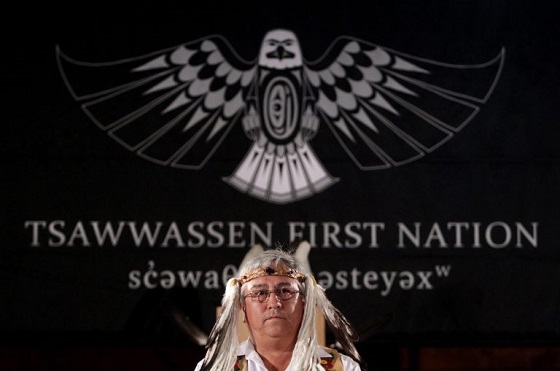Alberta
ASIRT says shooting of armed suspect reasonable use of force
From ASIRT (Alberta Serious Incident Response Team
On Sept. 27, 2017, the Alberta Serious Incident Response Team (ASIRT) was directed to investigate the circumstances surrounding the arrest of a 29-year-old man in Lloydminster that resulted in an officer-involved shooting.
During the arrest, the man was struck by a police vehicle and two RCMP officers discharged their service pistols, resulting in serious injury.
ASIRT interviewed police and civilian witnesses, including the 29-year-old man and both subject officers. Large portions of the events, including the uses of force were captured on audio and video recordings. ASIRT’s investigation is complete.
Having reviewed the investigation, executive director Susan Hughson, QC concluded there were no reasonable grounds, nor reasonable suspicion, to believe the involved officers committed any criminal offence.
On Sept. 27, 2017, Lloydminster RCMP officers attempted to stop a Dodge truck in relation to an outstanding investigation. The truck entered the drive-thru of a fast-food restaurant. An officer in a marked RCMP vehicle pulled behind the truck and activated its lights and siren. Other officers pulled in front of the truck. In response, the driver of the truck drove over the drive-thru curb and up an embankment to the roadway, speeding past two officers standing with their service pistols pointed at the truck. As the driver exited the parking lot, he headed northbound on 40 Avenue and engaged in a high-speed criminal flight from police.
As the truck approached 52 Street, it collided with a SUV driven by a 25-year-old woman, causing extensive damage to both vehicles and causing the woman’s vehicle to roll, landing on its roof. The woman did not sustain serious injury. The visible damage to her vehicle and the force of the collision would have easily left an observer with the belief that any occupant would have likely sustained serious injury or died. Data downloaded from the truck confirmed that immediately prior to the collision, it had been travelling at a speed of 144 km/h, and was moving at 124 km/h at the moment of collision.
The truck stopped on the side of the road. A passenger fled on foot from the truck to an adjacent field. The 29-year-old exited the truck holding a handgun, and immediately ran towards a man who stopped his truck to provide assistance.
An officer in pursuit pulled over his marked police vehicle and exited upon seeing the collision. He shouted verbal commands to drop the gun as the 29-year-old man ran towards the second truck. When the armed man failed to comply, the officer fired his service pistol. The man kept running and reached the civilian’s truck, attempting to gain entry. With a gun in hand, the man began banging on the driver’s window and yelling for him to “get out of the truck.”
As the armed man stood at the driver’s door, a second officer drove up in his unmarked RCMP SUV and clipped the armed man with the vehicle, causing him to spin away and fall, dropping the gun. As the second officer exited his SUV, the man got up, grabbed the handgun and raised it. The officer fired two shots from his service pistol striking the man.
The man fell to the ground, where he was arrested and handcuffed. RCMP members contacted Emergency Medical Services, who responded to the scene, provided medical attention and transported the man to a nearby hospital. He was subsequently transferred by STARS air ambulance to an Edmonton hospital where he was treated for what would ultimately turn out to be serious, permanent injuries including partial paralysis.
Under S. 25 of the Criminal Code, police officers are entitled to use as much force as is reasonably necessary to carry out their lawful duties. When necessary, where an officer believes, on reasonable grounds, that the person presents an imminent risk of death or grievous bodily harm to the officer or any other person, he or she may use force that is intended or likely to cause death or grievous bodily harm. An officer may also use lethal force in limited circumstances to prevent the flight of a person.
During the course of these events, the 29-year-old man demonstrated he was highly motivated to escape, having driven over an embankment and fled police. He was not only prepared to endanger others to do so, but had possibly already injured or killed an uninvolved woman who had simply been in his path, having forcefully collided with her vehicle. Instead of remaining at the scene of the collision or checking on the condition of the driver of the other vehicle, the man took a handgun from the truck before running towards a vehicle that stopped to provide assistance. In these circumstances, the man objectively presented a risk of death or grievous bodily harm to the occupant of that vehicle. Having directed the man to stop or drop the gun, the first officer’s use of force was reasonable and necessary. This risk became even more immediate when the man reached and attempted to enter the stopped truck. The use of the police vehicle to remove the armed man from the vehicle door of the innocent bystander was reasonable in the circumstances.
Having been fired on by the first officer, and struck by a police vehicle, the man stood and instead of running or surrendering, decided to pick up the handgun. In that moment, the man presented a risk of grievous bodily harm or death to not only the innocent bystander but also to the officer.
The officers’ use of force during this event, while they were lawfully placed and engaged in the lawful execution of their duties, was both reasonable and justified in the circumstances. In the opinion of the executive director, there can be no doubt that the actions of the officers prevented the man from committing what could be characterized as an armed robbery, or more simply, a “car-jacking”, that could have easily resulted in the serious injury or death of the driver of that vehicle. As such, no charges will be laid against the officers.
ASIRT’s mandate is to effectively, independently and objectively investigate incidents involving Alberta’s police that have resulted in serious injury or death to any person.
Alberta
Premier Smith: Canadians support agreement between Alberta and Ottawa and the major economic opportunities it could unlock for the benefit of all

From Energy Now
By Premier Danielle Smith
Get the Latest Canadian Focused Energy News Delivered to You! It’s FREE: Quick Sign-Up Here
If Canada wants to lead global energy security efforts, build out sovereign AI infrastructure, increase funding to social programs and national defence and expand trade to new markets, we must unleash the full potential of our vast natural resources and embrace our role as a global energy superpower.
The Alberta-Ottawa Energy agreement is the first step in accomplishing all of these critical objectives.
Recent polling shows that a majority of Canadians are supportive of this agreement and the major economic opportunities it could unlock for the benefit of all Canadians.
As a nation we must embrace two important realities: First, global demand for oil is increasing and second, Canada needs to generate more revenue to address its fiscal challenges.
Nations around the world — including Korea, Japan, India, Taiwan and China in Asia as well as various European nations — continue to ask for Canadian energy. We are perfectly positioned to meet those needs and lead global energy security efforts.
Our heavy oil is not only abundant, it’s responsibly developed, geopolitically stable and backed by decades of proven supply.
If we want to pay down our debt, increase funding to social programs and meet our NATO defence spending commitments, then we need to generate more revenue. And the best way to do so is to leverage our vast natural resources.
At today’s prices, Alberta’s proven oil and gas reserves represent trillions in value.
It’s not just a number; it’s a generational opportunity for Alberta and Canada to secure prosperity and invest in the future of our communities. But to unlock the full potential of this resource, we need the infrastructure to match our ambition.
There is one nation-building project that stands above all others in its ability to deliver economic benefits to Canada — a new bitumen pipeline to Asian markets.
The energy agreement signed on Nov. 27 includes a clear path to the construction of a one-million-plus barrel-per-day bitumen pipeline, with Indigenous co-ownership, that can ensure our province and country are no longer dependent on just one customer to buy our most valuable resource.
Indigenous co-ownership also provide millions in revenue to communities along the route of the project to the northwest coast, contributing toward long-lasting prosperity for their people.
The agreement also recognizes that we can increase oil and gas production while reducing our emissions.
The removal of the oil and gas emissions cap will allow our energy producers to grow and thrive again and the suspension of the federal net-zero power regulations in Alberta will open to doors to major AI data-centre investment.
It also means that Alberta will be a world leader in the development and implementation of emissions-reduction infrastructure — particularly in carbon capture utilization and storage.
The agreement will see Alberta work together with our federal partners and the Pathways companies to commence and complete the world’s largest carbon capture, utilization and storage infrastructure project.
This would make Alberta heavy oil the lowest intensity barrel on the market and displace millions of barrels of heavier-emitting fuels around the globe.
We’re sending a clear message to investors across the world: Alberta and Canada are leaders, not just in oil and gas, but in the innovation and technologies that are cutting per barrel emissions even as we ramp up production.
Where we are going — and where we intend to go with more frequency — is east, west, north and south, across oceans and around the globe. We have the energy other countries need, and will continue to need, for decades to come.
However, this agreement is just the first step in this journey. There is much hard work ahead of us. Trust must be built and earned in this partnership as we move through the next steps of this process.
But it’s very encouraging that Prime Minister Mark Carney has made it clear he is willing to work with Alberta’s government to accomplish our shared goal of making Canada an energy superpower.
That is something we have not seen from a Canadian prime minister in more than a decade.
Together, in good faith, Alberta and Ottawa have taken the first step towards making Canada a global energy superpower for benefit of all Canadians.
Danielle Smith is the Premier of Alberta
Alberta
A Memorandum of Understanding that no Canadian can understand

From the Fraser Institute
The federal and Alberta governments recently released their much-anticipated Memorandum of Understanding (MOU) outlining what it will take to build a pipeline from Alberta, through British Columbia, to tidewater to get more of our oil to markets beyond the United States.
This was great news, according to most in the media: “Ottawa-Alberta deal clears hurdles for West Coast pipeline,” was the top headline on the Globe and Mail’s website, “Carney inks new energy deal with Alberta, paving way to new pipeline” according to the National Post.
And the reaction from the political class? Well, former federal environment minister Steven Guilbeault resigned from Prime Minister Carney’s cabinet, perhaps positively indicating that this agreement might actually produce a new pipeline. Jason Kenney, a former Alberta premier and Harper government cabinet minister, congratulated Prime Minister Carney and Premier Smith on an “historic agreement.” Even Alberta NDP Leader Naheed Nenshi called the MOU “a positive step for our energy future.”
Finally, as Prime Minister Carney promised, Canada might build critical infrastructure “at a speed and scale not seen in generations.”
Given this seemingly great news, I eagerly read the six-page Memorandum of Understanding. Then I read it again and again. Each time, my enthusiasm and understanding diminished rapidly. By the fourth reading, the only objective conclusion I could reach was not that a pipeline would finally be built, but rather that only governments could write an MOU that no Canadian could understand.
The MOU is utterly incoherent. Go ahead, read it for yourself online. It’s only six pages. Here are a few examples.
The agreement states that, “Canada and Alberta agree that the approval, commencement and continued construction of the bitumen pipeline is a prerequisite to the Pathways project.” Then on the next line, “Canada and Alberta agree that the Pathways Project is also a prerequisite to the approval, commencement and continued construction of the bitumen pipeline.”
Two things, of course, cannot logically be prerequisites for each other.
But worry not, under the MOU, Alberta and Ottawa will appoint an “Implementation Committee” to deliver “outcomes” (this is from a federal government that just created the “Major Project Office” to get major projects approved and constructed) including “Determining the means by which Alberta can submit its pipeline application to the Major Projects Office on or before July 1, 2026.”
What does “Determining the means” even mean?
What’s worse is that under the MOU, the application for this pipeline project must be “ready to submit to the Major Projects Office on or before July 1, 2026.” Then it could be another two years (or until 2028) before Ottawa approves the pipeline project. But the MOU states the Pathways Project is to be built in stages, starting in 2027. And that takes us back to the circular reasoning of the prerequisites noted above.
Other conditions needed to move forward include:
The private sector must construct and finance the pipeline. Serious question: which private-sector firm would take this risk? And does the Alberta government plan to indemnify the company against these risks?
Indigenous Peoples must co-own the pipeline project.
Alberta must collaborate with B.C. to ensure British Columbians get a cut or “share substantial economic and financial benefits of the proposed pipeline” in MOU speak.
None of this, of course, addresses the major issue in our country—that is, investors lack clarity on timelines and certainty about project approvals. The Carney government established the Major Project Office to fast-track project approvals and provide greater certainty. Of the 11 project “winners” the federal government has already picked, most either already had approvals or are already at an advanced stage in the process. And one of the most important nation-building projects—a pipeline to get our oil to tidewater—hasn’t even been referred to the Major Project Office.
What message does all this send to the investment community? Have we made it easier to get projects approved? No. Have we made things clearer? No. Business investment in Canada has fallen off a cliff and is down 25 per cent per worker since 2014. We’ve seen a massive outflow of capital from the country, more than $388 billion since 2014.
To change this, Canada needs clear rules and certain timelines for project approvals. Not an opaque Memorandum of Understanding.
-

 Business2 days ago
Business2 days agoRecent price declines don’t solve Toronto’s housing affordability crisis
-

 MAiD21 hours ago
MAiD21 hours agoFrom Exception to Routine. Why Canada’s State-Assisted Suicide Regime Demands a Human-Rights Review
-

 MAiD2 days ago
MAiD2 days agoHealth Canada report finds euthanasia now accounts for over 5% of deaths nationwide
-

 Daily Caller2 days ago
Daily Caller2 days agoTech Mogul Gives $6 Billion To 25 Million Kids To Boost Trump Investment Accounts
-

 Automotive2 days ago
Automotive2 days agoPower Struggle: Governments start quietly backing away from EV mandates
-

 Energy2 days ago
Energy2 days agoUnceded is uncertain
-

 Business19 hours ago
Business19 hours agoCarney government should privatize airports—then open airline industry to competition
-

 Business2 days ago
Business2 days agoNew Chevy ad celebrates marriage, raising children





